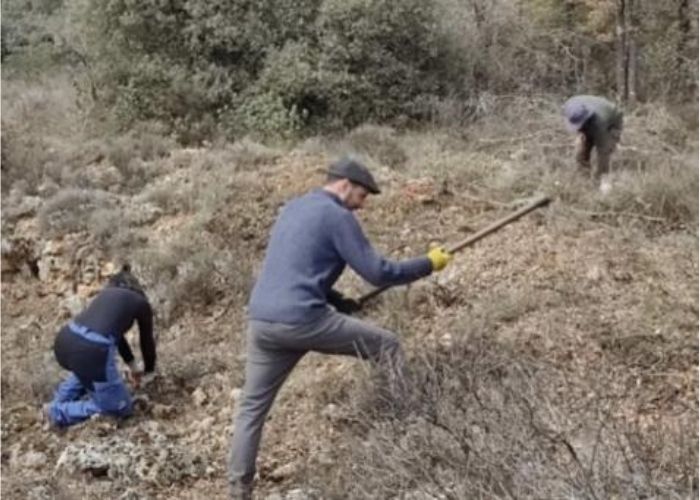PROVINCIA DE GUADALAJARA – When many people hear of concentration camps, they immediately think of the Second World War, Nazi Germany, and the persecution of the Jews. However, after the Spanish Civil War under Franco’s rule, there were also concentration camps in Spain.
Archaeologists from the Spanish Scientific Institute recently discovered such a camp. The Spanish Civil War raged from 1937 to 1939 and is one of the most horrific and bloodiest periods in Spanish history. During this war, one in twenty Spaniards was imprisoned in purpose-built prisons. But the years that followed were also characterised by humiliation and oppression under Franco’s dictatorship.
Many prisons from the war then served as concentration camps, especially for captured soldiers. Very little is known about these concentration camps. Furthermore, the cause of this obscurity is the totalitarian and fascist regime under Francisco Franco.
In addition, Franco later ordered these traumatic sites of the Civil War to be reforested and rendered invisible in order to move them into oblivion. He made the war a taboo subject. Furthermore, people were no longer allowed to talk about it in an attempt to forget all the horrific scenes.
Discovery Concentration Camp Jadraque
It remained that way until a few years ago, but then local researchers Alfonso López Beltrán and Julián Dueñas discovered excavations on a mountain near a village in Guadalajara. The newspaper ElDiario writes about how the find came about. They captured their find with a drone. After consulting the General Military Archives of Ávila and the data of the National Geographic Institute, they found documents indicating the existence of an almost intact command post, a transmission centre, and a concentration camp.
The Secretary of State for Democratic Remembrance then made a budget available and a group of eight archaeologists from the Scientific Research Institute continued to explore the camp.
Camp Jadraque
It was a unique find for this group of archaeologists. Virtually the entire camp was still intact. After removing the overgrown earth and shrubbery, trenches, and military encampments, a forced labour camp, and the concentration camp emerged.
On the maps showing the 300 concentration camps from the Franco era, there is none like that of Jadraque. It is a place of remembrance, but also a historical heritage.
Barracks for Franco’s soldiers
During the civil war, it was a prison. Republican prisoners initially built the barracks for Franco’s soldiers fighting on the Guadalajara border. These barracks were completed at the end of 1938, four months before the end of the war. After the war, from 1939, it was briefly a makeshift concentration camp for soldiers who had surrendered en masse.
Classification of the prisoners
Prisoners were classified according to their political identity. Whether they were loyal, sympathised with the regime, or had to be shot. After all, the regime eliminated anyone who did not fit into it.
Appalling conditions
The more than 4,000 inmates who have been in this camp lived in appalling conditions, half underground in cut holes and ditches, on top of each other for lack of space. Moreover, they were severely malnourished, often resulting in illness and death.
Camp Jadraque clear evidence of war crimes
The Jadraque concentration camp is clear evidence of war crimes. Living conditions did not at all meet the minimum requirements for the treatment of prisoners of war. The camp guards treated the prisoners worse than cattle. Moreover, the winter of 1937 was the coldest of the 1930s. Furthermore, people who lived in the area at the time say they saw wheelbarrows with the corpses passing by. However, archaeologists do not expect to find any remains of human bodies here, because the executions took place elsewhere.
Memorial site?
It is normal for such spaces and places to be restored to serve as memorial sites. But not yet happened with the concentration camps of the Franco regime. However, that may change with this discovery.


